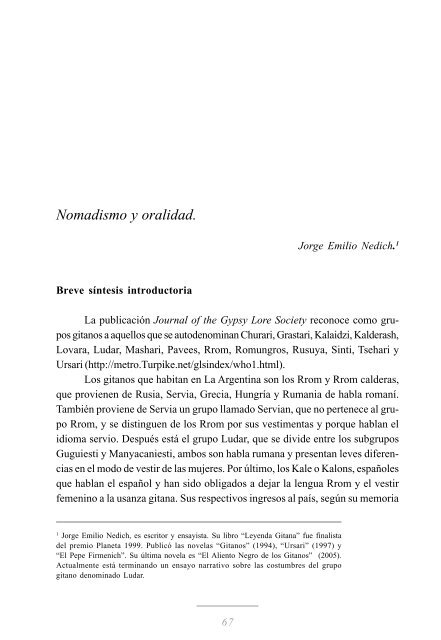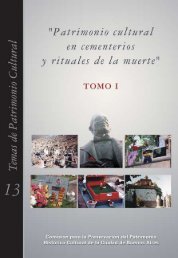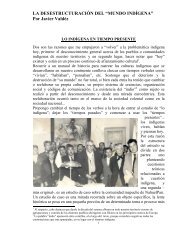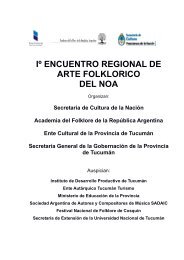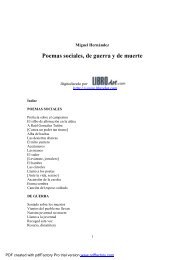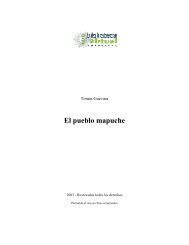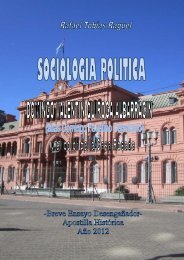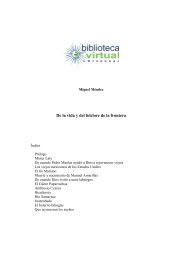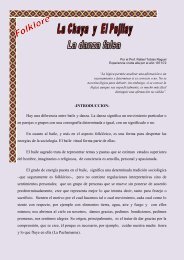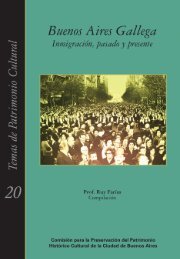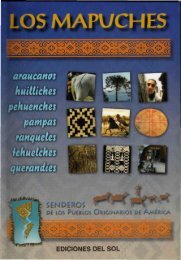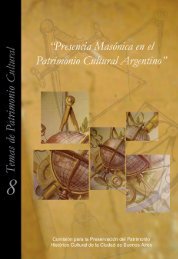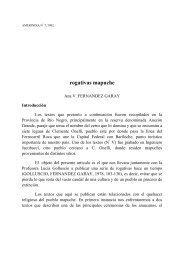Patrimonio Cultural Gitano - Folklore Tradiciones
Patrimonio Cultural Gitano - Folklore Tradiciones
Patrimonio Cultural Gitano - Folklore Tradiciones
- No tags were found...
You also want an ePaper? Increase the reach of your titles
YUMPU automatically turns print PDFs into web optimized ePapers that Google loves.
<strong>Patrimonio</strong> <strong>Cultural</strong> <strong>Gitano</strong>Nomadismo y oralidad.Jorge Emilio Nedich. 1Breve síntesis introductoriaLa publicación Journal of the Gypsy Lore Society reconoce como gruposgitanos a aquellos que se autodenominan Churari, Grastari, Kalaidzi, Kalderash,Lovara, Ludar, Mashari, Pavees, Rrom, Romungros, Rusuya, Sinti, Tsehari yUrsari (http://metro.Turpike.net/glsindex/who1.html).Los gitanos que habitan en La Argentina son los Rrom y Rrom calderas,que provienen de Rusia, Servia, Grecia, Hungría y Rumania de habla romaní.También proviene de Servia un grupo llamado Servian, que no pertenece al grupoRrom, y se distinguen de los Rrom por sus vestimentas y porque hablan elidioma servio. Después está el grupo Ludar, que se divide entre los subgruposGuguiesti y Manyacaniesti, ambos son habla rumana y presentan leves diferenciasen el modo de vestir de las mujeres. Por último, los Kale o Kalons, españolesque hablan el español y han sido obligados a dejar la lengua Rrom y el vestirfemenino a la usanza gitana. Sus respectivos ingresos al país, según su memoria1Jorge Emilio Nedich, es escritor y ensayista. Su libro “Leyenda Gitana” fue finalistadel premio Planeta 1999. Publicó las novelas “<strong>Gitano</strong>s” (1994), “Ursari” (1997) y“El Pepe Firmenich”. Su última novela es “El Aliento Negro de los <strong>Gitano</strong>s” (2005).Actualmente está terminando un ensayo narrativo sobre las costumbres del grupogitano denominado Ludar.67


